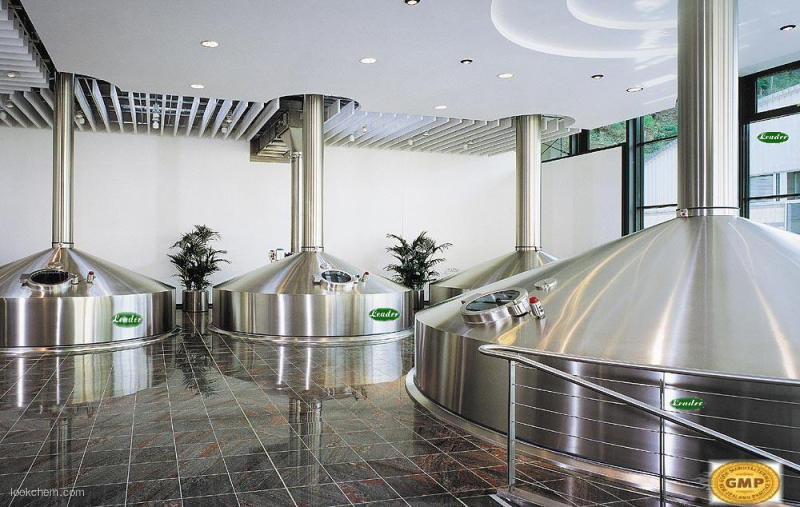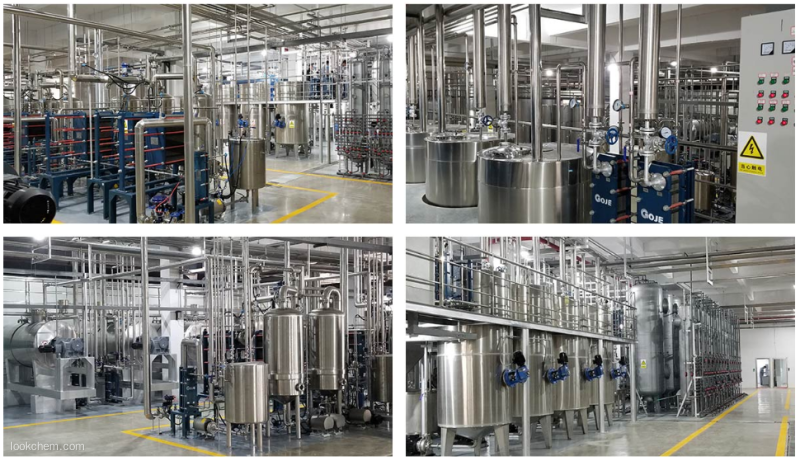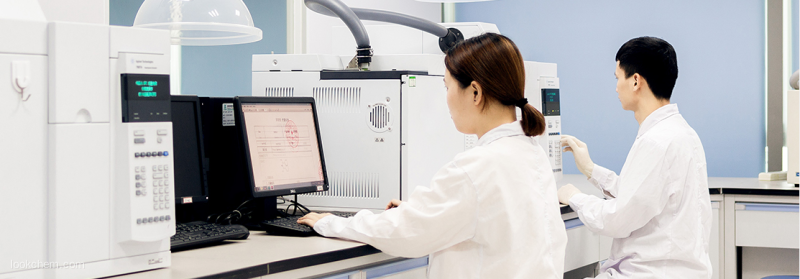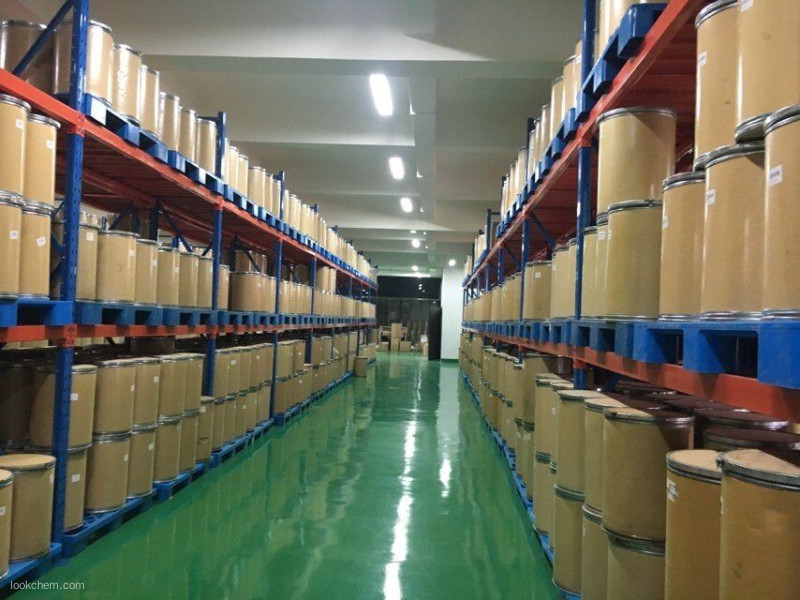PRODUCT DETAILS
| Inosine Basic information |
| |
| Inosine Chemical Properties |
| Melting point |
222-226 °C (dec.) (lit.) |
| Boiling point |
226 C (dec.) |
| alpha |
-49.2 º (c=1,H2O 18 ºC) |
| density |
1.3846 (rough estimate) |
| refractive index |
-52 ° (C=1, H2O) |
| storage temp. |
Keep in dark place,Sealed in dry,Room Temperature |
| solubility |
H2O: 0.5 M, clear, colorless |
| form |
Crystalline Powder |
| pka |
13.24±0.70(Predicted) |
| color |
White |
| Odor |
Odorless |
| Water Solubility |
2.1 g/100 mL (20 ºC) |
| Merck |
14,4975 |
| BRN |
624889 |
| Stability: |
Hygroscopic |
| InChIKey |
UGQMRVRMYYASKQ-PKJMTWSGSA-N |
| CAS DataBase Reference |
58-63-9(CAS DataBase Reference) |
| NIST Chemistry Reference |
Inosine(58-63-9) |
| EPA Substance Registry System |
Inosine (58-63-9) |
| Hazard Codes |
Xi |
| Risk Statements |
36/37/38 |
| Safety Statements |
24/25-36-26 |
| WGK Germany |
2 |
| RTECS |
NM7460000 |
| F |
10 |
| TSCA |
Yes |
| HS Code |
29389090 |
| Toxicity |
LD50 oral in rat: > 10gm/kg |
| Provider |
Language |
| Inosine |
English |
| SigmaAldrich |
English |
| ACROS |
English |
| ALFA |
English |
| |
| Inosine Usage And Synthesis |
| Chemical Properties |
White crystalline powder |
| Originator |
Foreart,Guarnieri,Italy,1970 |
| Occurrence |
Inosine is a synthetic |
| Uses |
Has neuroprotective properties improving axonal wiring. Has been used to treat stroke patients to restore neural function. |
| Uses |
cell function activator, cardiotonic |
| Uses |
Suppresses the increase of glucose and insulin in the blood |
| Uses |
Inosine has been used:
- as a medium supplement in nucleotide rescue experiments in pancreatic cancer cell lines.
- as a component in holidic (synthetic) medium and in larval two-choice preference assay.
- as a reference standard in mass spectroscopy.
|
| Definition |
ChEBI: A purine nucleoside in which hypoxanthine is attached to ribofuranose via a beta-N9-glycosidic bond. |
| Manufacturing Process |
As described in US Patent 3,049,536, inosine may be prepared starting with adenosine.
The Deamination of Adenosine: 20 g of adenosine are dissolved in one liter of water by warming, and after cooling to room temperature 120 g of barium nitrite (monohydrate) are added to the solution. Under stirring there is added in time intervals of one hour 160 cc of 2 N sulfuric acid after each time interval. After the third addition, the reaction mass is allowed to stand for 3 hours at room temperature. The solution is then tested for barium, and if some barium is still present a slight excess of sulfuric acid is added. 300 cc of methanol is then added. In order to drive off the excess of nitrous acid, CO2 is conducted through the solution until the solution is free of nitrous acid as determined by testing with potassium iodide-starch paper. The precipitated barium sulfate is separated by centrifugation. The residue is washed one time with about 500 cc of water. The total volume of the centrifugate is about 2.3 liters.
Isolation of Inosine by Ion Exchange Method: Half of the above clear centrifugate (1.15 liters) is treated with 250 cc of anion exchange (bicarbonate form) and stirred together therewith for 16 hours at room temperature. The pH value is increased thereby to about 4 to 5. The ion exchanger is filtered off under suction and washed 3 times, each time with 150 cc of water. The solution is brought to a pH value of 7 by means of normal sodium hydroxide (total volume of the solution about 1.55 liters), and concentrated to a volume of about 100 cc under vacuum.
The inosine is crystallized overnight in an ice box and the inosine is then filtered off by suction, washed with a small amount of ice water and dried at a temperature of 105°C. A first fraction of crude inosine consisting of 5.4 g having a purity of 99% is obtained. Further fractions of crude inosine are obtained from the mother liquid by concentration, the total amount constituting 3.2 g having a purity of 96 to 98%. The yield of crude inosine is 8.6 g which is equal to 86%.
Recrystallization of the Crude Inosine: 17.0 g of crude inosine are dissolved in 400 cc of 80% ethanol in a water bath, filtered while hot and brought to crystallization in an ice box. After standing overnight the crystalline material is filtered off under suction and washed with ice water. The pure inosine is dried in a drying chamber at a temperature of 105°C. The yield of pure inosine is 15.0 g which is equal to 75%. The yield can be further increased by workingup the mother liquor of the crystallization as set forth above.
Alternatively, inosine may be made by fermentation as described in US Patent 3,111,459. 3 ml portions of a culture medium consisting of glucose (5 g/dl), ammonium chloride (0.4 g/dl), urea (0.4 g/dl), KH2PO4 (0.1 g/dl), MgSO4 · 7H2O (0.02 g/dl), Mn++ (2 ppm), Fe++ (2ppm), casein hydrolyzate (0.2 g/dl), yeast extract (0.2 g/dl), corn steep liquor (0.2 ml/dl), polypeptone (0.1 g/dl), meat extract (0.1 g/dl) and sodium ribonucleate (10 mg/dl) were poured into respective test tubes and each tube was sterilized at 115°C for 10 minutes. Thereafter separately sterilized calcium carbonate was added in the amount of 2 g/dl and then cells of Bacillus subtilis S26910 were inoculated into the above media and cultured with shaking at 30°C for 20 hours.
The resulting culture liquids were utilized for seeding, 20 ml of the medium having the composition described above were poured into a 500 ml shaking flask and sterilized at 115°C for 10 minutes and five drops of the above seed were added, and then cultured with shaking at 30°C for 65 hours. Thereafter 0.15 g/dl of inosine were accumulated.
The inosine-containing solution, which was obtained by separating the cells from the resulting fermentation liquid, was treated with both decolorizing resins and anion exchange resins by means of a conventional method and then acetone was added to crystallize the inosine. 1.47 g of the crude crystals of inosine were obtained from 3.5 liters of the culture liquid containing 1 g of inosine per liter. |
| Therapeutic Function |
Cardiotonic |
| General Description |
Inosine is a non-canonical nucleotide majorly present as monophosphate. It has ability to base pair with deoxythymidine, deoxyadenosine and deoxyguanosine. Incorporation of inosine in place of guanine modulates translational events. Inosine has antioxidant, anti-inflammatory and neuroprotective functionality. Inosine is prescribed as a therapeutic supplement for nerve injury, inflammation and oxidative stress. It modulates biological processes through adenosine receptors. Its enhances neurite outgrowth in depressive disorders via adenosine receptors. Inosine is also used for treating sepsis in infections.
|
| Biochem/physiol Actions |
Inosine is a potent stimulator of nerve growth factor (NGF) induced neurite outgrowth. The elevated levels of inosine in brain following injury are associated with the increased expression proteins related to axonal regeneration and growth. Mice given inosine demonstrated enhanced recovery of fine motor control following ischemic brain damage. Inosine may be used in studies of the process A-to-I RNA editing. |
| Purification Methods |
(-)-Inosine forms anhydrous crystals from aqueous 80% EtOH but the dihydrate from H2O. [Beilstein 31 H 25, 26 III/IV 2087.] |
| |
| Inosine Preparation Products And Raw materials |
|
|
|
|
|
|
|
|
|
|
|
|
|
About US
Leader Biochemical Group is a large leader incorporated industry manufacturers and suppliers of advanced refined raw materials From the year of 1996 when our factory was put into production to year of 2020, our group has successively invested in more than 52 factories with shares and subordinates.We focus on manufacture Pharm & chemicals, functional active ingredients, nutritional Ingredients, health care products, cosmetics, pharmaceutical and refined feed, oil, natural plant ingredients industries to provide top quality of GMP standards products.All the invested factories' product lines cover API and intermediates, vitamins, amino acids, plant extracts, daily chemical products, cosmetics raw materials, nutrition and health care products, food additives, feed additives, essential oil products, fine chemical products and agricultural chemical raw materials And flavors and fragrances. Especially in the field of vitamins, amino acids, pharmaceutical raw materials and cosmetic raw materials, we have more than 20 years of production and sales experience. All products meet the requirements of high international export standards and have been recognized by customers all over the world. Our manufacture basement & R&D center located in National Aerospace Economic & Technical Development Zone Xi`an Shaanxi China. Now not only relying on self-cultivation and development as well as maintains good cooperative relations with many famous research institutes and universities in China. Now, we have closely cooperation with Shanghai Institute of Organic Chemistry of Chinese Academy of Science, Beijing Institute of Material Medical of Chinese Academy of Medical Science, China Pharmaceutical University, Zhejiang University. Closely cooperation with them not only integrating Science and technology resources, but also increasing the R&D speed and improving our R&D power. Offering Powerful Tech supporting Platform for group development. Keep serve the manufacture and the market as the R&D central task, focus on the technical research. Now there are 3 technology R & D platforms including biological extract, microorganism fermentation and chemical synthesis, and can independently research and develop kinds of difficult APIs and pharmaceutical intermediates. With the strong support of China State Institute of Pharmaceutical Industry (hereinafter short for CSIPI), earlier known as Shanghai Institute of Pharmaceutical Industry (SIPI), we have unique advantages in the R & D and industrialization of high-grade, precision and advanced products. Now our Group technical force is abundant, existing staff more that 1000 people, senior professional and technical staff accounted for more than 50% of the total number of employees, including 15 PhD research and development personnel, 5 master′ S degree in technical and management personnel 9 people. We have advanced equipment like fermentation equipment and technology also extraction, isolation, purification, synthesis with rich production experience and strict quality control system, According to the GMP required, quickly transforming the R&D results to industrial production in time, it is our advantages and our products are exported to North and South America, Europe, Middle East, Africa, and other five continents and scale the forefront in the nation, won good international reputation. We believe only good quality can bring good cooperation, quality is our key spirit during our production, we are warmly welcome clients and partner from all over the world contact us for everlasting cooperation, Leader will be your strong, sincere and reliable partner in China.
Our Group profiles
Our Factories production lines



Our Factories R&D ability


Our Factories warehouse




 Premiumsupplier
Premiumsupplier 



